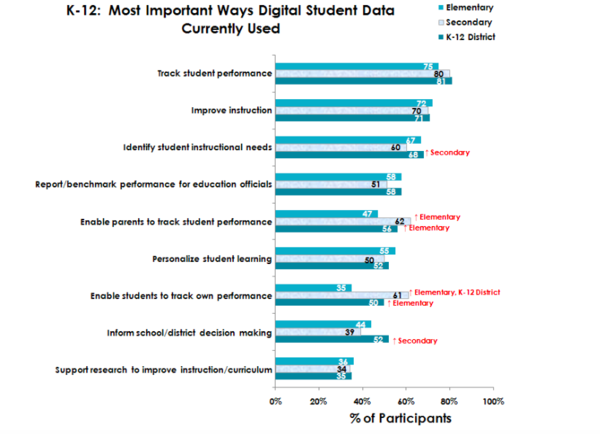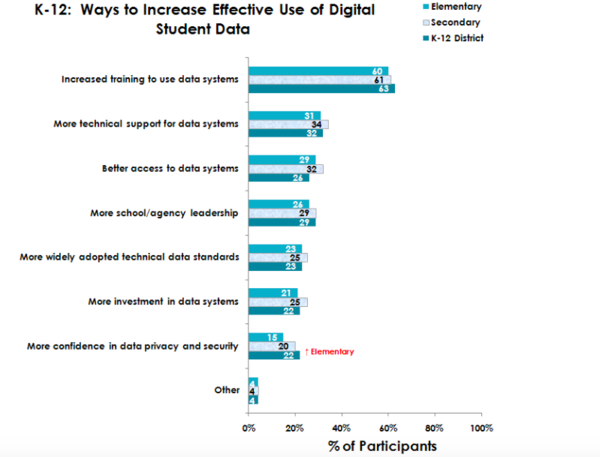Educators Report on Uses, Wish List for Student Data in K-12
Philadelphia
Educators have a long wish list for the use of student data, and their own use of technology, including more training in both areas.
Those are among the findings in a new analysis of how educators view their schools’ and districts’ use of technology and student data. The research was released Tuesday by the Education Technology Industry Network of the Software & Information Industry Association at ISTE 2015.
In general, the study found that the most critical unmet needs for K-12 educators are:
- Continuous access to adequate bandwidth
- Access to the level of technology resources common to other professionals
- Training in technology that is available to other professionals
The organization’s 2015 Vision K-20 Survey Report measures schools’ and colleges’ self-reported progress toward technology and e-learning adoption. More than 1,000 educators answered the survey for this year’s research, and most were from K-12 schools.
The survey found that schools “are making slow but steady progress toward reaching their instructional and operational goals through the use of technology, including increased use of student data,” according to a release from the organization.
At all levels of K-12, the data are most often used to track student performance and improve instruction, as shown in this graph:
But educators say they want more training in how to use the systems, and more technical support for them. Other ways educators see opportunities to increase the effectiveness of the student data collected are demonstrated on this graph:
The Vision K-20 Survey is an annual online self-assessment hosted on the SIIA’s Vision K-20 website for educators and educational leaders in K-12 classrooms, schools, and districts and postsecondary courses, departments, and campuses. The survey gauges respondents’ progress using 37 benchmark statements identified as part of the SIIA Vision K-20 goals and measures.
This is the eighth year the SIIA has surveyed educators across the U.S. on these topics. From a longitudinal perspective, this year’s results show an increase in the following benchmarks:
- Online access
- Institutional leaders’ use of technology tools
- Use of online assessments
- Delivery of digital educational content
- Interactivity of multimedia instructional materials
Graphs: From the executive summary of the Vision K-20 Educator Survey Report, which is available here.



